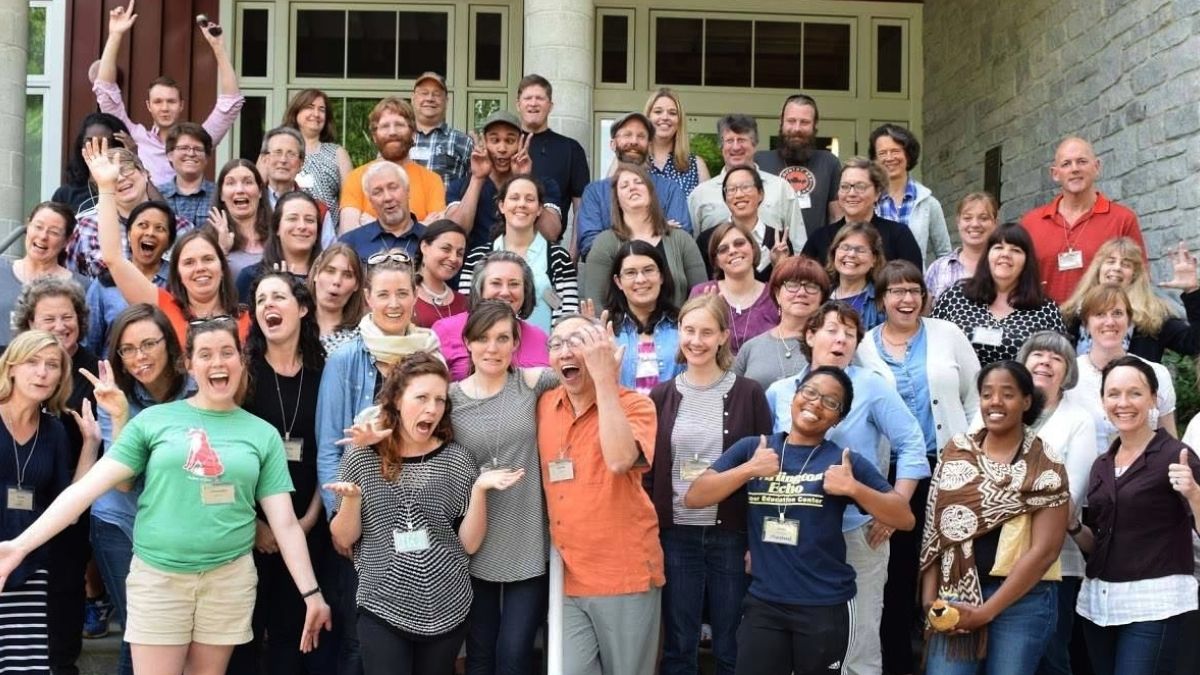
ee360+ Goal 3 Activities
Objective: Greater usability and access to quality environmental education resources and reduced duplication of effort through increased coordination and collaboration among institutions and agencies.
Outputs:
- Increase the number and topics of curated, high-quality environmental education resources available online
- Increase access to environmental education information and materials through eePRO, NAAEE’s online hub for EE
- Leverage Dissemination Partners to increase resource sharing and professional development opportunities
- Make the Guidelines and other key resources accessible and relevant by updating and posting online
Image

PRO Picks
Our network of experts share their recommendations for the finest materials in specific subject areas. These materials are fully integrated in eePRO and enable users to quickly identify the most effective resources to meet their goals.
For more than 20 years, NAAEE has demonstrated its commitment to quality EE resources by creating, updating, and broadly disseminating the Guidelines for Excellence series. As part of ee360, NAAEE is continuing to ensure that educators are aware of and have access to outstanding resources through a new initiative called PRO Picks. We’ve tapped into our network of experts to collect their recommendations for the finest materials in specific subject areas.
Each Pro has a biography so you’ll see why they’ve been selected by NAAEE. They've provided commentary on why they feel the resources they picked stand out, and we've included bullet points showing which key characteristics of the Guidelines for Excellence in Materials these resources address.
Image

Access to Information & Materials
NAAEE is leveraging the success of eePRO online hub for professional development, by expanding the content and services and growing the number and diversity of users. This includes webinars, news, outreach, and using technology to increase capacity.
Providing greater usability and access to quality EE resources and reduced duplication of effort through increased coordination and collaboration among institutions and agencies.
Image

eePRO Online Hub
NAAEE developed eePRO, an exciting hub for professional development in environmental education, to allow environmental educators to join dynamic groups focused on themes of interest to the field; stay connected with colleagues through discussions, blogs, opportunities, resource postings, networking, and other online features.
Image

Webinars, News, More
eePRO presents monthly webinars on cutting-edge issues in the field “Bringing New Ideas and Innovation to the Field of EE." eePRO also allows EE professionals to search for highlights and news from NAAEE and the field; workshops, online courses, and other learning opportunities; the latest jobs, grants, and scholarships; research and resources; events, conference, and webinar recordings, and other important portals.
Image

Outreach
NAAEE is expanding eePRO's reach through the newsletters, eeNEWS and eeJOBS; emailed digests to members of the eePRO groups; and through NAAEE’s growing social media outreach. NAAEE is leveraging the success of eePRO by expanding the content and services available and growing the number and diversity of users. Plans include exploring new moderated interest groups and offering a monthly webinars series facilitated by exceptional thought leaders.
Image

Technology to Increase Capacity
NAAEE will work with our Affiliates to explore technical integration, in particular by developing a customizable eePRO widget that could be installed on Affiliate websites to display a content feed from eePRO. As part of our efforts to increase the capacity of our Affiliates, we continually look for ways to support their technical needs and integrate their websites with our own.
Image

Dissemination of Materials
NAAEE is supporting an extensive network of Dissemination Partners, a group of 16 federal agencies, 501(c)(3) organizations, and universities that have agreed to share ee360+ resources, professional development opportunities, and best practices with each other and to distribute this information to their networks through their own communications and professional development platforms.
Image

Materials Development
Initiated in 1994, the National Project for Excellence in Environmental Education (NPEEE) developed the Guidelines for Excellence, a series of publications that help educators create quality environmental education resources and programs. In 2021, NPEEE began development of a new set of guidelines focusing on climate change education and climate justice, applying an enhanced version of the national process of critique and consensus.
Image

Guidelines Publications
The Guidelines for Excellence series include: Environmental Education Materials: Guidelines for Excellence, K–12 Environmental Education: Guidelines for Excellence, Professional Development of Environmental Educators: Guidelines for Excellence, Environmental Education Programs: Guidelines for Excellence, Early Childhood Environmental Education Programs: Guidelines for Excellence, and Community Engagement: Guidelines for Excellence.
A new set of guidelines, focusing on climate change education and climate justice, will be developed applying an enhanced version of the national process of critique and consensus used to write the previous six sets of Guidelines for Excellence. The process will reflect ideals and practices outlined in the Community Engagement: Guidelines for Excellence, ensuring that the development process is broad-based, inclusive, and transparent. Robust and active climate change education and climate justice communities exist throughout North America. Engaging with these communities and learning from them will be essential throughout the guidelines development process.



